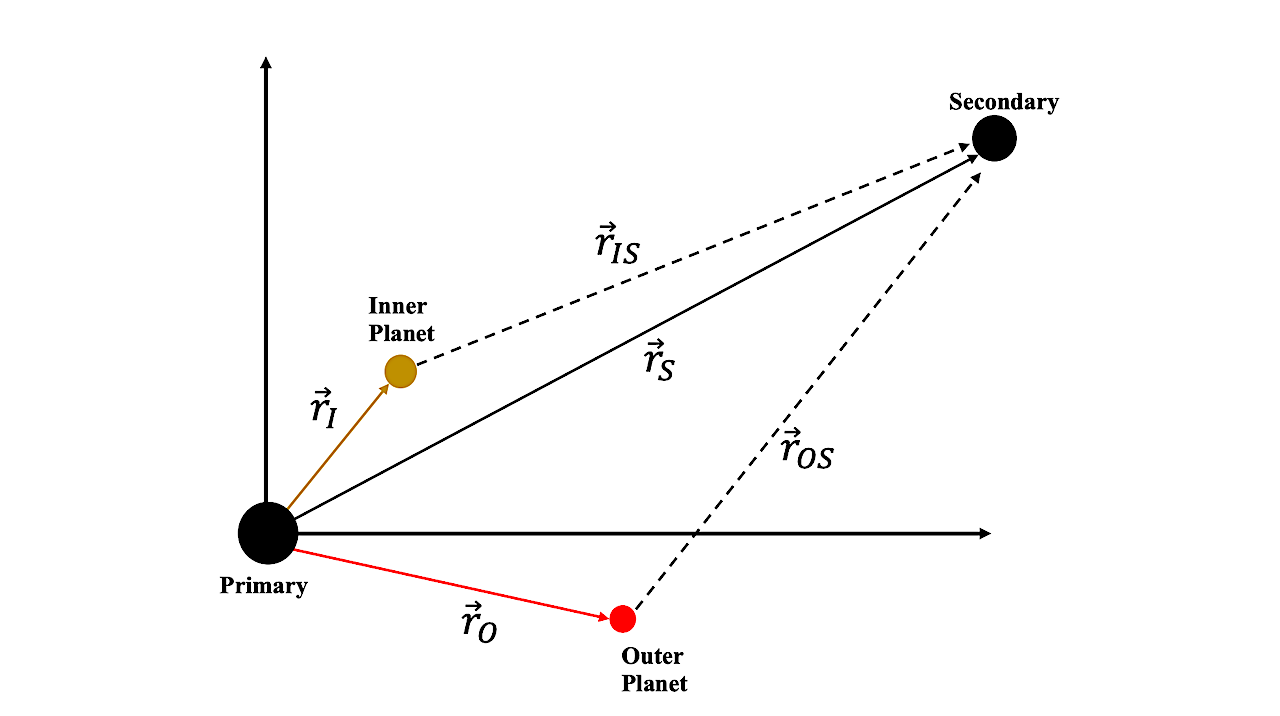Schematic presentation of the system showing the binary star and the two planets orbiting the primary. The primary star is at the origin of the coordinate system. The indices I, O, S refer to the inner and outer planet, and the secondary star, respectively. — astro-ph.EP
Motivated by the diversity of circumstellar planets in binary stars and the strong effects of the secular resonances of Jupiter and Saturn on the formation and architecture of the inner solar system, we have launched an expansive project on studying the effects of secular resonances on the formation of terrestrial planets around a star of a moderately close binary.
As the first phase of our project, we present here the general theory of secular resonances in dual-star systems where the primary hosts two giant planets. Using the concept of generalized disturbing function, we derive the formula for the locations of secular resonances and show that in systems where the perturbation of the secondary star is stronger, the locations of secular resonances are farther way from the primary and closer to the giant planets.
The latter implies that in such systems, terrestrial planet formation has a larger area to proceed with more of the protoplanetary disk being available to it. To demonstrate the validity of our theoretical results, we simulated the evolution of a protoplanetary disk interior to the inner giant planet.
Results, in addition to confirming our theoretical predictions, pointed to an important finding: In binary stars, the perturbation of the secondary suppresses the secular resonances of giant planets. Simulations also show that as the disk loses material, secular resonances move inward, scattering objects out of the disk and/or facilitating their collisional growth. We present results of our study and discuss their implications for the simulations of terrestrial planet formation.
Nader Haghighipour, Michael Andrew
Comments: 26 pages, 9 figures, 4 tables. Accepted for publication in ApJ. This is the first of a two-article series on secular resonances and their effects on planet formation in circumstellar planetary systems in moderately closed binary stars
Subjects: Earth and Planetary Astrophysics (astro-ph.EP)
Cite as: arXiv:2507.17092 [astro-ph.EP] (or arXiv:2507.17092v1 [astro-ph.EP] for this version)
https://doi.org/10.48550/arXiv.2507.17092
Focus to learn more
Journal reference: The Astronomical Journal, 170:117, August 1, 2025
Related DOI:
https://doi.org/10.3847/1538-3881/ad82e8
Focus to learn more
Submission history
From: Nader Haghighipour
[v1] Wed, 23 Jul 2025 00:18:20 UTC (2,541 KB)
https://arxiv.org/abs/2507.17092
Astrobiology,

